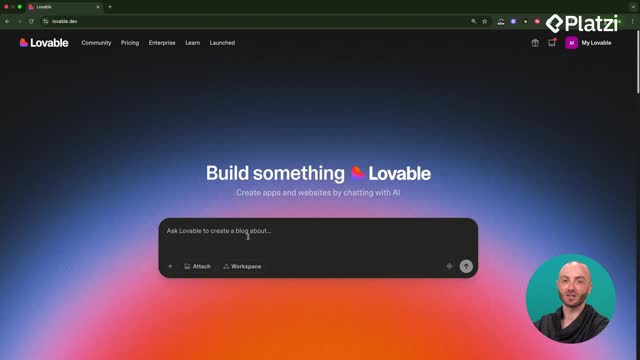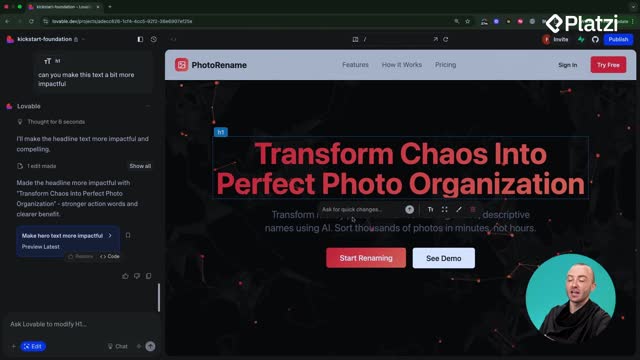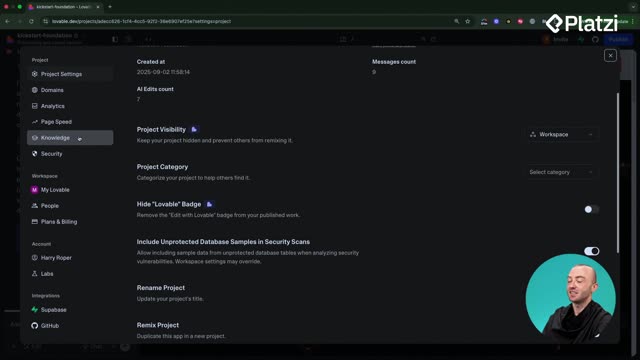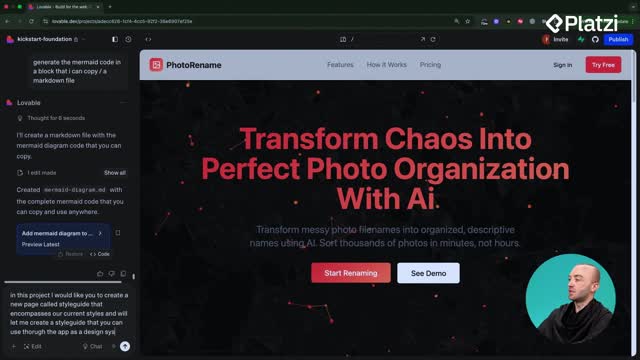Master CRUD fast with a real to‑do dashboard using Lovable and Supabase. Learn how to create, read, update, and delete records, auto-generate front-end code, and keep user data safe with row-level security. Clear steps, plain English, and examples you can reuse.
What is CRUD and why does it matter?
CRUD is the foundation of most apps: create, read, update, delete. It’s how users add data, view it, change it, and remove it in a database or table. In the example, the goal is to let users manage to-dos in a dashboard without writing code.
- Create: add new to-dos to the table.
- Read: load and display saved to-dos in the dashboard.
- Update: mark items as completed or edit them.
- Delete: remove items you no longer need.
Key vocabulary and examples.
- CRUD: acronym for create, read, update, delete. Example: “we want to be able to create, read, update, and delete them as well.”
- Database/table: where records live. Example: “the basic thing that you wanna do with any sort of database or table.”
- Record: one row in a table. Example: “change some records, and be able to delete them as well.”
- Dashboard: the app screen where you interact with data.
How does Lovable set up Supabase for a to-do table?
Lovable integrates tightly with Supabase to handle both the front-end code and the SQL needed to create tables. Using the prompt box, you ask for a CRUD-enabled to-do table and approve the proposed database changes.
What you ask Lovable to do.
- “Add a table to the dashboard that allows the user to tick off to-dos.”
- “Create a table in Supabase to enable it.”
- “Make sure it utilizes CRUD.”
What Lovable creates in SQL.
- id: unique identifier for each to-do.
- user_id: links the to-do to the logged-in user.
- title: text of the to-do.
- completed: simple true/false to track status.
What happens when you click approve.
- Lovable contacts Supabase and runs the SQL.
- Tables are created and policies prepared.
- The app connects to the database and the front end is generated.
- You can add, delete, and mark items complete in the UI.
- Refreshing the dashboard shows the data persists, proving it’s saved in the database.
- In Supabase’s table editor, you can see your to-dos tied to your user ID.
Useful vocabulary in context.
- Prompt: the instruction you give Lovable.
- Approve: confirm the suggested database change.
- Table editor: where you view rows in Supabase.
- Front-end code: UI generated to interact with your data.
How is data kept secure with RLS policies?
Security uses RLS (row-level security) so users can’t see each other’s data. Policies check the user’s identity, often using auth.uid, before allowing any action. Lovable typically sets this up for you, and may create helper functions or triggers to streamline operations.
- RLS: ensures “Harry can read his content, but Sue cannot read Harry’s content.”
- Policy: a rule that controls who can select, insert, update, or delete.
- auth.uid: checks the authorized user ID inside policies.
- Trigger/function: optional helpers to automate or speed up tasks.
Which vocabulary should you notice?
- RLS (row-level security): per-user access rules.
- Policy: permission rule in Supabase.
- auth.uid: the logged-in user’s ID used in checks.
- User ID: the identifier that links data to a user.
- SQL: the language used to create tables and policies.
- API: service you connect to for external data.
- Requests and responses: how you send queries to an API and read results.
What practical skills are practiced?
- Writing a clear prompt that demands CRUD coverage.
- Reviewing and approving database changes.
- Understanding columns: id, user_id, title, completed.
- Checking RLS policies reference auth.uid.
- Adding, deleting, and marking to-dos as complete.
- Verifying persistence by refreshing the dashboard.
- Viewing data in Supabase’s table editor.
What examples show CRUD in action?
- Create: “add new to-dos.”
- Read: refresh the dashboard and see the same items.
- Update: “mark the eat chicken one” as complete.
- Delete: remove items you no longer need.
Looking ahead: a quick API connection is mentioned, with a plan to explore requests and responses next. If you have questions about prompts, RLS, or the to-do schema, share them in the comments and compare approaches with others.





